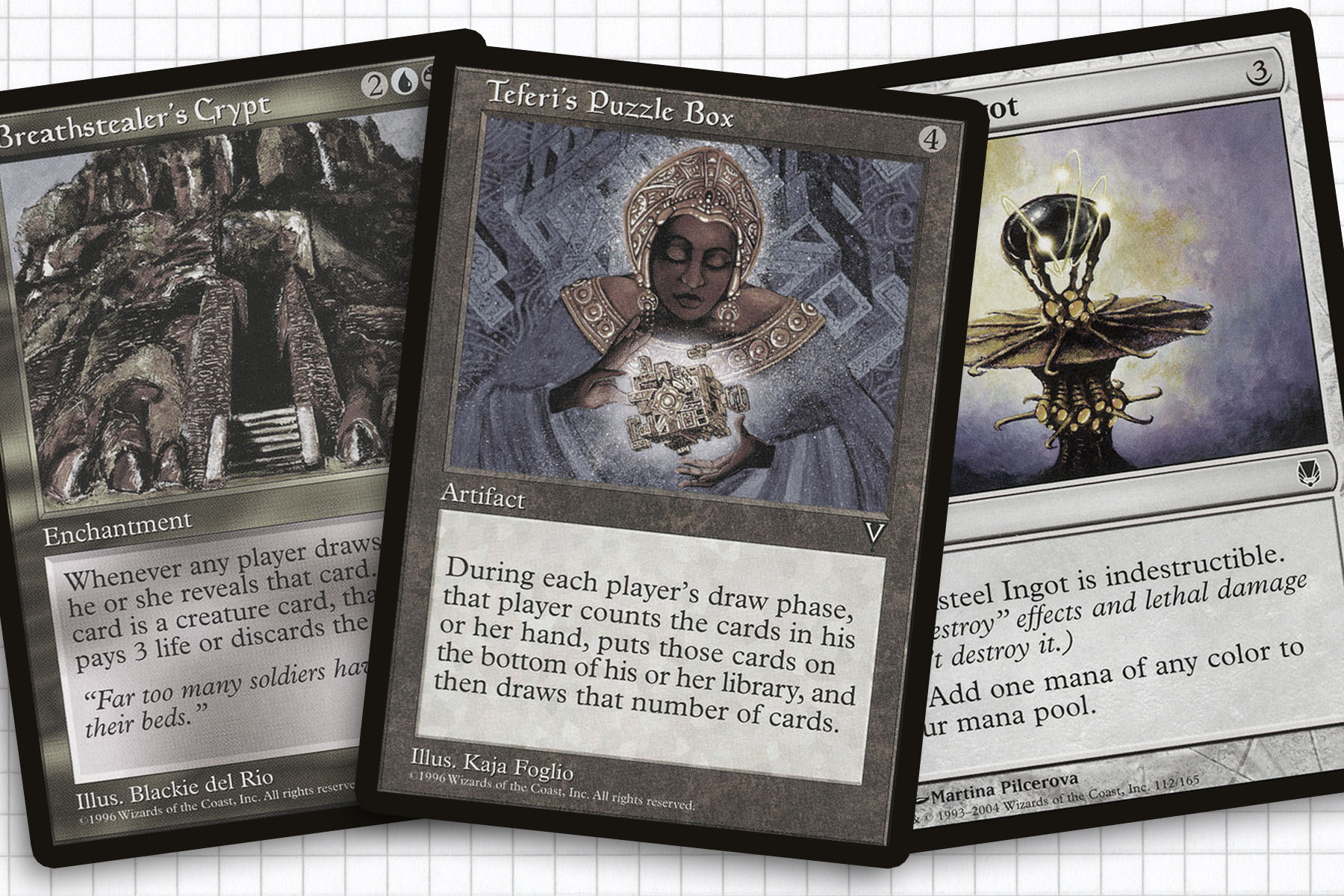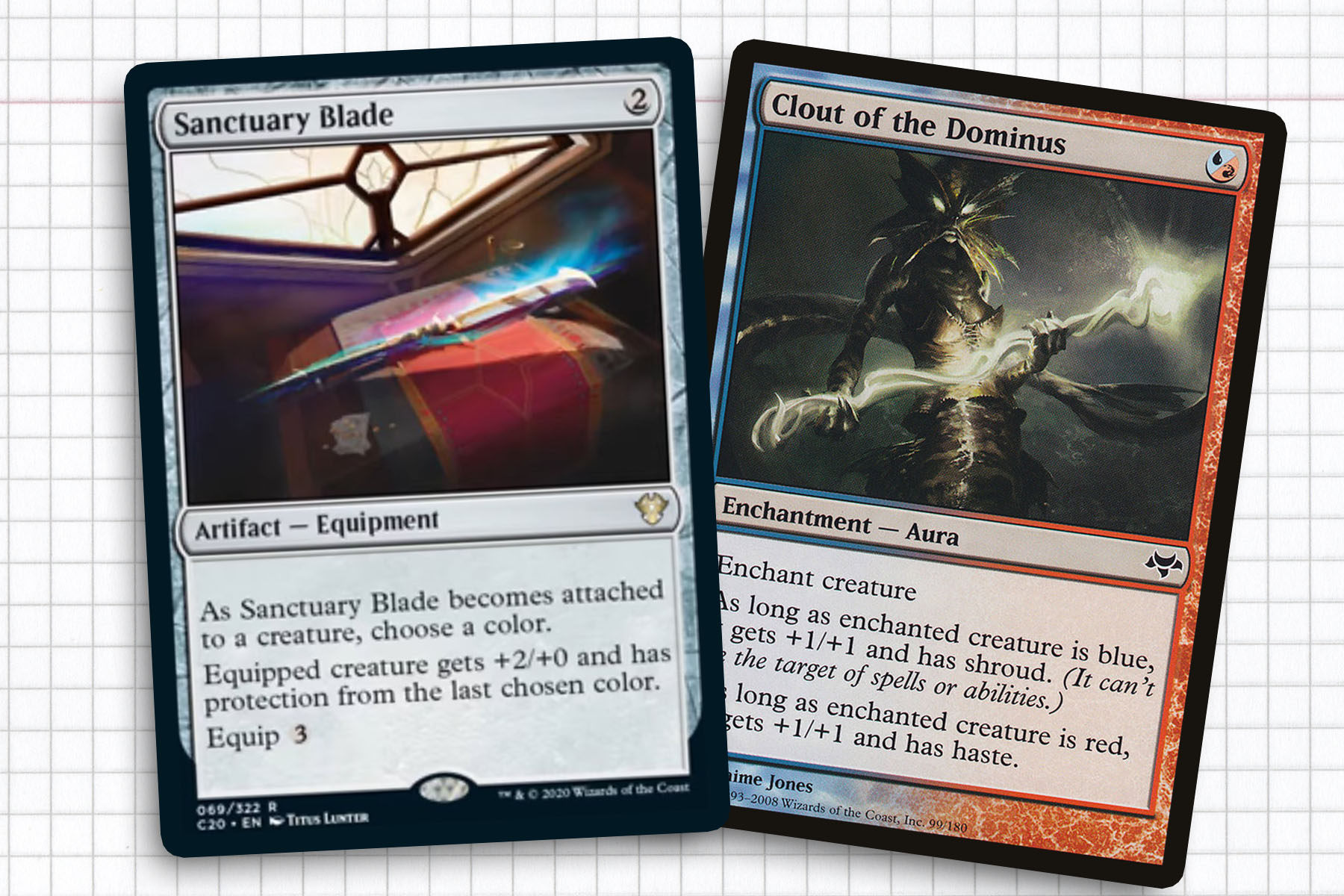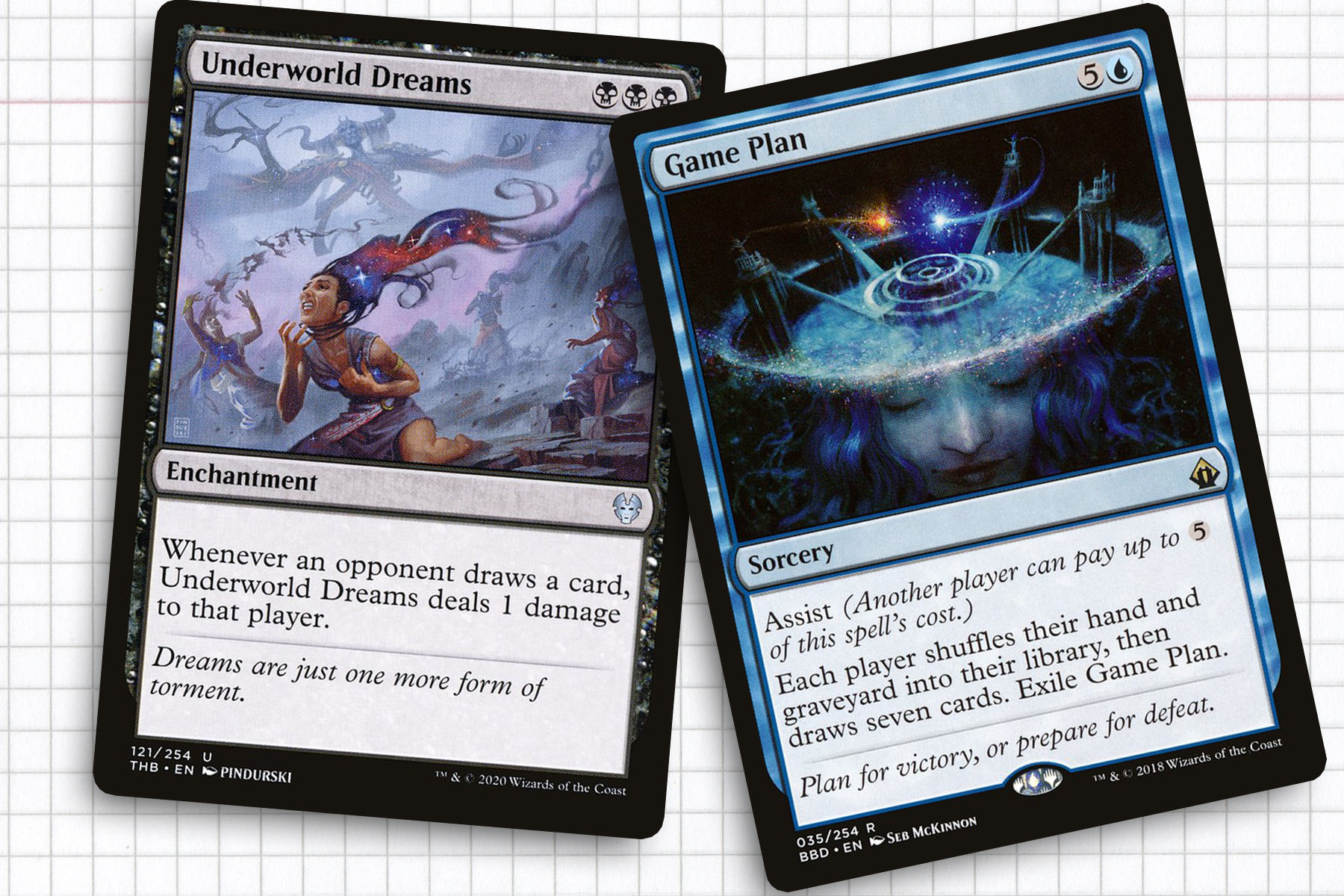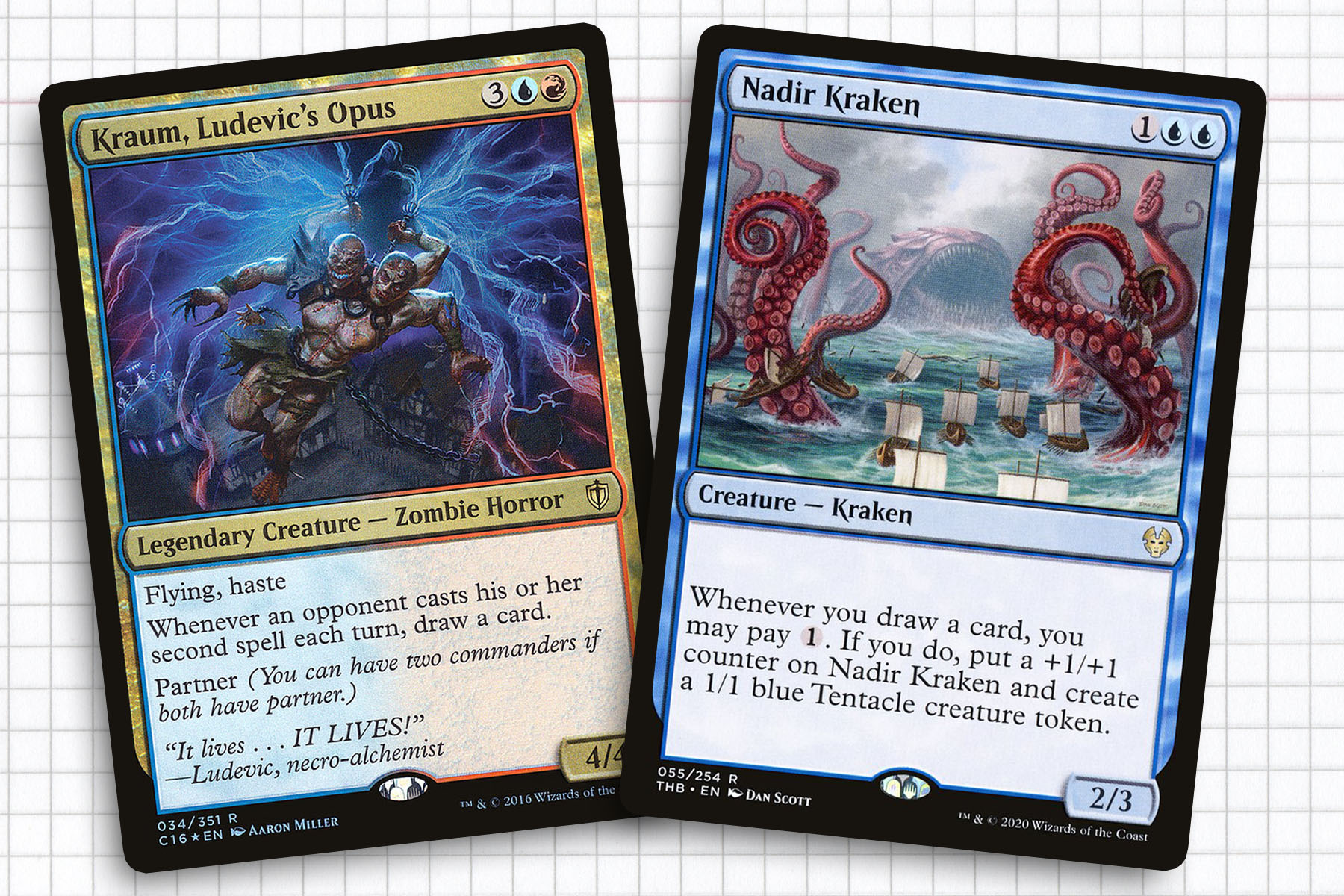As a lifelong resident of Minnesota with friends who live in Minneapolis proper, some who have been displaced, the last week and a half has been a stressful time. Writing has been a way to lift myself from the existential dread that had me glued to my phone an unhealthy amount these last few days. Not everyone gets that luxury. Black lives matter. Please consider donating to Black Table Arts, Joyce Preschool, or West Broadway Business and Area Coalition, as the Minnesota Freedom Fund is no longer taking donations.
After last week’s discussion about some of the decks I have built inspired by articles I’ve written, it got me thinking about a deck that I’ve never touched on, Nekusar, the Mindrazer. For a good stretch of time after the release of Commander 2013, Nekusar was a villain of the format. And I was flying my flag for this zombie wizard. Yes, for a least a year, I was a heel in the Minneapolis Commander metagame. As a budding Commander player, this was my gateway into the more aggressive generals, finally playing a deck that was a very known quantity for the time.
By today’s standards, Nekusar is not an offensive general. He allows everybody to have a good time by feeding them cards at the cost of some life, but he’s not explosive compared to the legendary creatures of today. The issue that most people took with the general at the time was its extreme linearity—Howling Mine stapled to Underworld Dreams makes it obvious what to do to win. That didn’t matter to me for the most part because I wasn’t going to be playing it optimally anyway.
But as new generals came into focus and expanded the range of decks I had, I never came back and made updates to this one. Today, I’d like to look at this deck not only through the lens of cards from the last four or five years, but also my improved deck-building capabilities. I’m not looking to optimize the deck, but to refine my vision to focus on what’s important.
Commander: Nekusar, the Mindrazer
Creatures: Archfiend of Ifnir, Barbed Shocker, Burnished Hart, Fate Unraveler, Inverter of Truth, Irencrag Pyromancer, Kraum, Ludevic’s Opus, Magus of the Wheel, Master of the Feast, Nadir Kraken, Psychosis Crawler, Rankle, Master of Pranks, Shocker, Stormfist Crusader, Whirlpool Warrior
Planeswalkers: Jace Beleren, Ob Nixilis, the Hate-Twisted
Artifacts: Anvil of Bogardan, Elixir of Immortality, Fellwar Stone, Font of Mythos, Geth’s Grimoire, Howling Mine, Mind Stone, Sanctuary Blade, Talisman of Creativity, Talisman of Dominance, Talisman of Indulgence, Temple Bell
Enchantments: Clout of the Dominus, Curator’s Ward, Dictate of Kruphix, Diplomatic Immunity, Fevered Visions, Improbable Alliance, Liliana’s Caress, Megrim, Ominous Seas, Phyrexian Tyranny, Raiders’ Wake, Robe of Mirrors, Underworld Dreams
Instants: Arcane Denial, Bedevil, Channeled Force, Dream Fracture, Drown in the Loch, Negate, Rewind, Vision Skeins, Wheel and Deal
Sorceries: Echo of Eons, Fascination, Game Plan, Incendiary Command, Khorvath’s Fury, Prosperity, Reforge the Soul, Skyscribing, Time Reversal, Vandalblast, Wheel of Fate
Lands: 9 Island, 5 Mountain, 4 Swamp, Bloodfell Caves, Crumbling Necropolis, Dimir Aqueduct, Dimir Guildgate, Dismal Backwater, Dragonskull Summit, Drowned Catacomb, Geier Reach Sanitarium, Izzet Boilerworks, Izzet Guildgate, Mikokoro, Center of the Sea, Rakdos Carnarium, Rakdos Guildgate, Reliquary Tower, Sulfur Falls, Swiftwater Cliffs, Temple of Deceit, Temple of Epiphany, Temple of Malice

Changes in Philosophy
A lot of what changed from my original construction of this deck to now comes down to changes in how I play Commander—and by extension, what effects I choose to include in decks. Unfortunately, I don’t have the deck constructed any longer, but I have a very good sense of what was in the list. Starting with individual cards, Breathstealer’s Crypt stands out as something I can’t believe I ever thought belonged in this deck. It doesn’t synergize with our general and creates this awkward auction environment every time anyone draws a card. Both of these factors meant that I played less wheel effects as well.
Then there are the unsporting cards that I’ve personally grown out of like Grafted Exoskeleton. This absolutely wins games, but this deck in particular, it often wins a game so abruptly that I feel it ruins the fun. Teferi’s Puzzle Box is debatably an auto-include for Nekusar, but over time I’ve begun to dislike it because it causes players to disengage with the game. No one can plan for the future, as their hand changes on their draw step. This draws hate from other players while extending turns far too long.
And finally, one of the philosophies I’ve developed in the last few months is to limit the number of three-drop mana rocks I use in decks that don’t have Green. There was a time when this deck was relying on Darksteel Ingot, Commander Sphere, and Obelisk of Grixis because they could cover all three colors on a single card. But I’ve begun to realize that a suite like Talisman of Creativity, Talisman of Dominance, and Talisman of Indulgence procide better to access mana earlier and more reliably. This also encourages me to practice better mulliganing if I want to have all my colors.

Always on Guard
One of the lessons I learned early with Nekusar that still holds true is this: We need to keep our general protected. For those unfamiliar with Nekusar, it’s important to understand that the damage he dishes out to your opponents as they draw cards is not considered Commander damage, as it’s not combat damage. This means that for Nekusar to win, we’re looking to bring everyone else to zero.
Since we’re going long term, I don’t want to be caught off guard by Hero’s Downfall at the wrong time. We come equipped with Clout of the Dominus, Curator’s Ward, and Diplomatic Immunity to ensure that we have some staying power. From here, we start our machinations.

Universal Card Draw
Card advantage in Commander is an imbalance that can be hard to overcome. For every card you draw, the rest of the table is drawing around three cards. One of the attractive parts of Nekusar initially was that we were taking the card advantage and converting it into damage for the rest of the table. At a base level, the deck is trying to use symmetrical draw effects like Anvil of Bogardan, Dictate of Kruphix, Font of Mythos, and Temple Bell to allow players to draw excessive amounts of cards every turn.
The deceptive part is that our early game of any combination of these cards mixed with our general often keeps us off the radar. Most players like the extra cards and don’t get alarmed about their life total until it’s closer to twenty anyway. Once we can start weaponizing card draw through Fascination or Prosperity in combination with our general, Phyrexian Tyranny, or Underworld Dreams; that’s when we’re going to become a verified threat to the table. Add to that Liliana’s Caress or Megrim, and life totals begin to drop fast as players move to discard.
What’s different now is that players are wiser now, so we’re not going get away with this for too long before repercussions start to arise. Which is why my advice is if you pilot this deck, leave yourself the open mana for either Incendiary Command, Khorvath’s Fury, Reforge the Soul, or Wheel and Deal the turn you decide to fill everyone’s hands with cards. Even if you don’t have them yet, play assuming you’re going to draw one.

In the Event of Failure
It is very likely that you will survive to the point of everyone falling to around fifteen to twenty life; but if we fall on our back foot, it’s important to have another plan of attack. My original draft of this deck had a lot of things going for it, but there were shortcomings. My biggest oversight was not having any form of an alternate path to victory.
Improbable Alliance and Ominous Seas are both armies in a can. Originally, I tried to use Chasm Skulker for a similar purpose, but it always proved to be too fragile to be helpful. In an ideal world, the investment should garner at least ten damage, which Skulker never delivered on. Inverter of Truth is another decent sized threat that should also take all the useful cards we’ve already used residing in our graveyard and make them the contents of our deck.
Even at the most basic level, Nekusar, the Mindrazer is a fun deck because it’s pushing the game towards completion every turn. This deck allows games to develop because players often have access to a full hand of cards every turn. The overdone generals that I ran into as I was coming up in the format are now kind of forgotten about. Running out classic generals like Nekusar, Sharuum the Hegemon, or Numot, the Devastator in environments that have escalated beyond them can be novel. I certainly loved my time playing those decks at the time, and I think an updated version of Nekusar might be required to capture some of my nostalgia.
Stay safe everyone. I hope to see you next time.
Ryan Sainio is a Graphic Designer who writes about EDH and the EDH community. He has been playing Magic: The Gathering since 7th Edition in 2002 and values flavorful and fun gameplay over competitively optimized decks.



